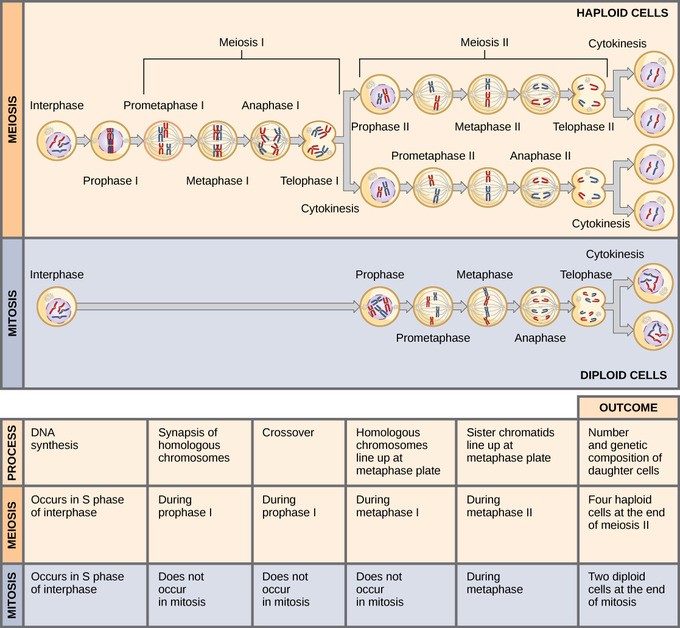Mitosis and meiosis are fundamental processes of nuclear division in eukaryotic cells. While sharing some similarities, their outcomes differ significantly. This article delves into the critical distinctions between the daughter cells produced by mitosis and meiosis.
 image
image
Figure: Comparing Meiosis and Mitosis. Meiosis involves two rounds of nuclear division following one round of DNA replication, resulting in four genetically distinct haploid daughter cells. Mitosis, with a single nuclear division, produces two diploid daughter cells identical to the parent cell. Key differences occur during meiosis I.
Daughter Cell Comparison: Mitosis vs. Meiosis
The primary distinction lies in the number of daughter cells and their genetic composition. Mitosis, crucial for cell growth, repair, and asexual reproduction, yields two daughter cells genetically identical to the parent cell. These cells are diploid, meaning they possess two complete sets of chromosomes.
Conversely, meiosis, essential for sexual reproduction, generates four daughter cells, each genetically unique and haploid. A haploid cell contains only one set of chromosomes, half the number of the parent cell. This reduction in chromosome number is vital for maintaining a consistent chromosome number across generations when two gametes (sperm and egg) fuse during fertilization.
Genetic Variation in Meiosis
The genetic diversity of daughter cells in meiosis stems from two key events:
-
Crossing Over: During meiosis I, homologous chromosomes pair up and exchange genetic material through a process called crossing over. This recombination shuffles the genetic information, creating new combinations of genes on the chromosomes.
-
Independent Assortment: Homologous chromosomes align randomly along the metaphase plate during meiosis I. The subsequent separation of these chromosomes into different daughter cells leads to diverse combinations of maternal and paternal chromosomes in the resulting gametes.
Meiosis I: The Reduction Division
A critical difference between mitosis and meiosis occurs during meiosis I. In this stage:
- Homologous chromosomes pair up forming tetrads.
- Crossing over takes place between homologous chromosomes.
- Tetrads align along the metaphase plate, with kinetochore fibers connecting to each chromosome.
The separation of homologous chromosomes during meiosis I reduces the ploidy level from diploid to haploid. This is why meiosis I is known as the reduction division. Mitosis, on the other hand, maintains the ploidy level throughout the process. Meiosis II, similar to mitosis, involves the separation of sister chromatids but does not further reduce the chromosome number. It is often referred to as the equational division.
Key Differences Summarized
| Feature | Mitosis | Meiosis |
|---|---|---|
| Daughter Cells | Two | Four |
| Ploidy | Diploid | Haploid |
| Genetic Makeup | Identical to parent cell | Genetically different from parent cell and each other |
| Chromosome # | Same as parent cell | Half of parent cell |
| Purpose | Growth, repair, asexual reproduction | Sexual reproduction |
Conclusion
The daughter cells produced by mitosis and meiosis differ significantly. Mitosis generates identical diploid daughter cells for growth and repair, while meiosis produces genetically unique haploid daughter cells for sexual reproduction. These differences are crucial for maintaining genetic diversity and ensuring the proper functioning of organisms.